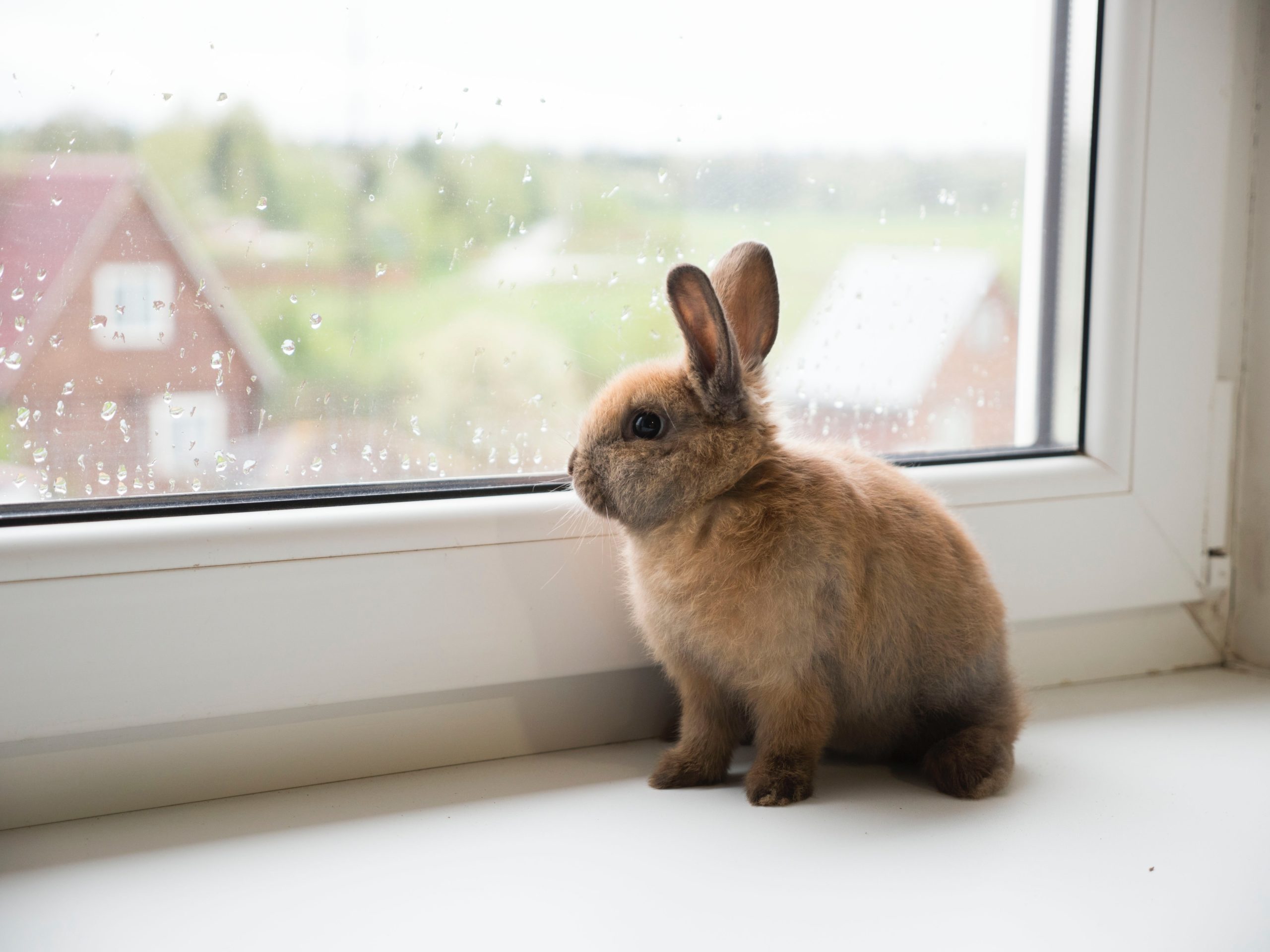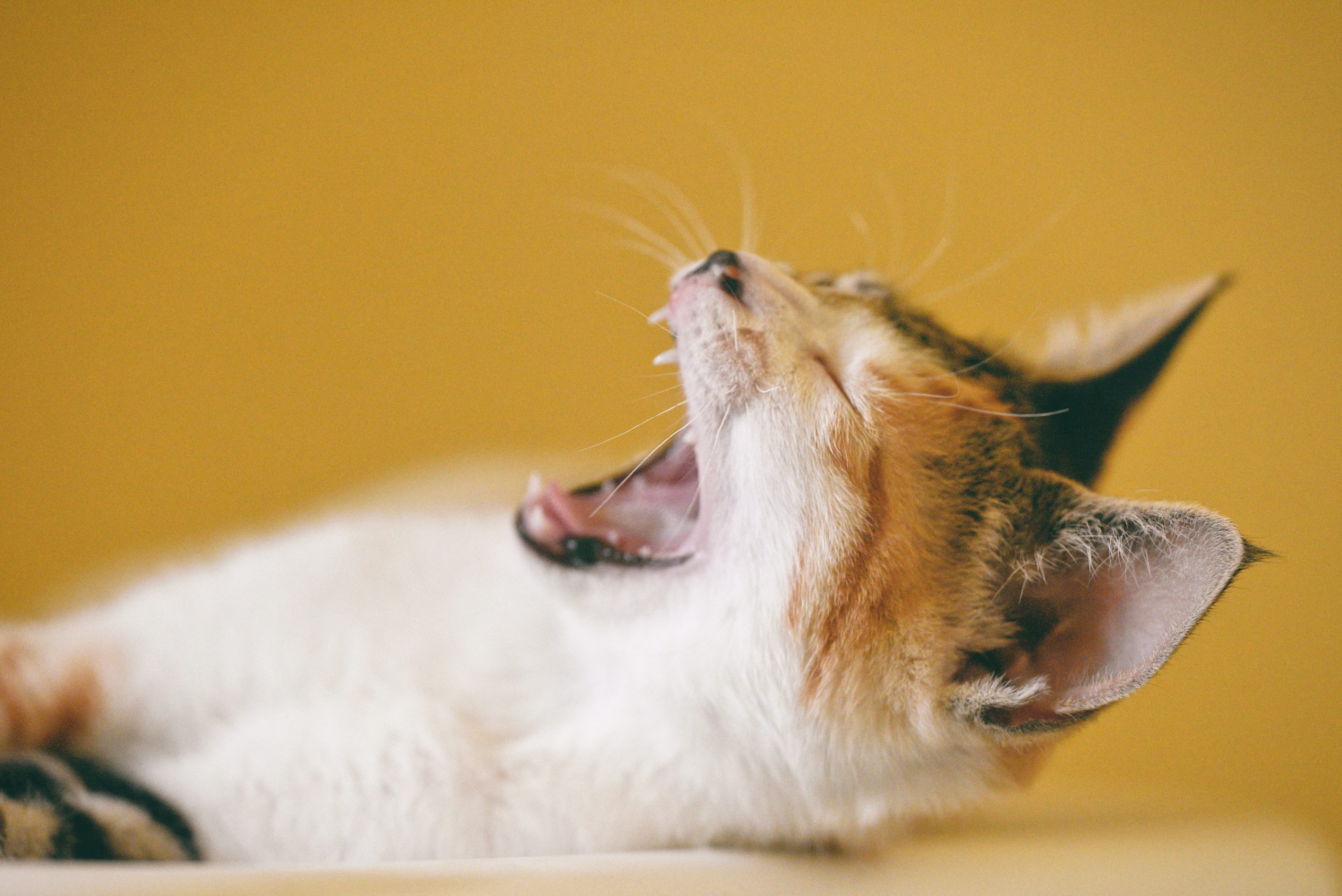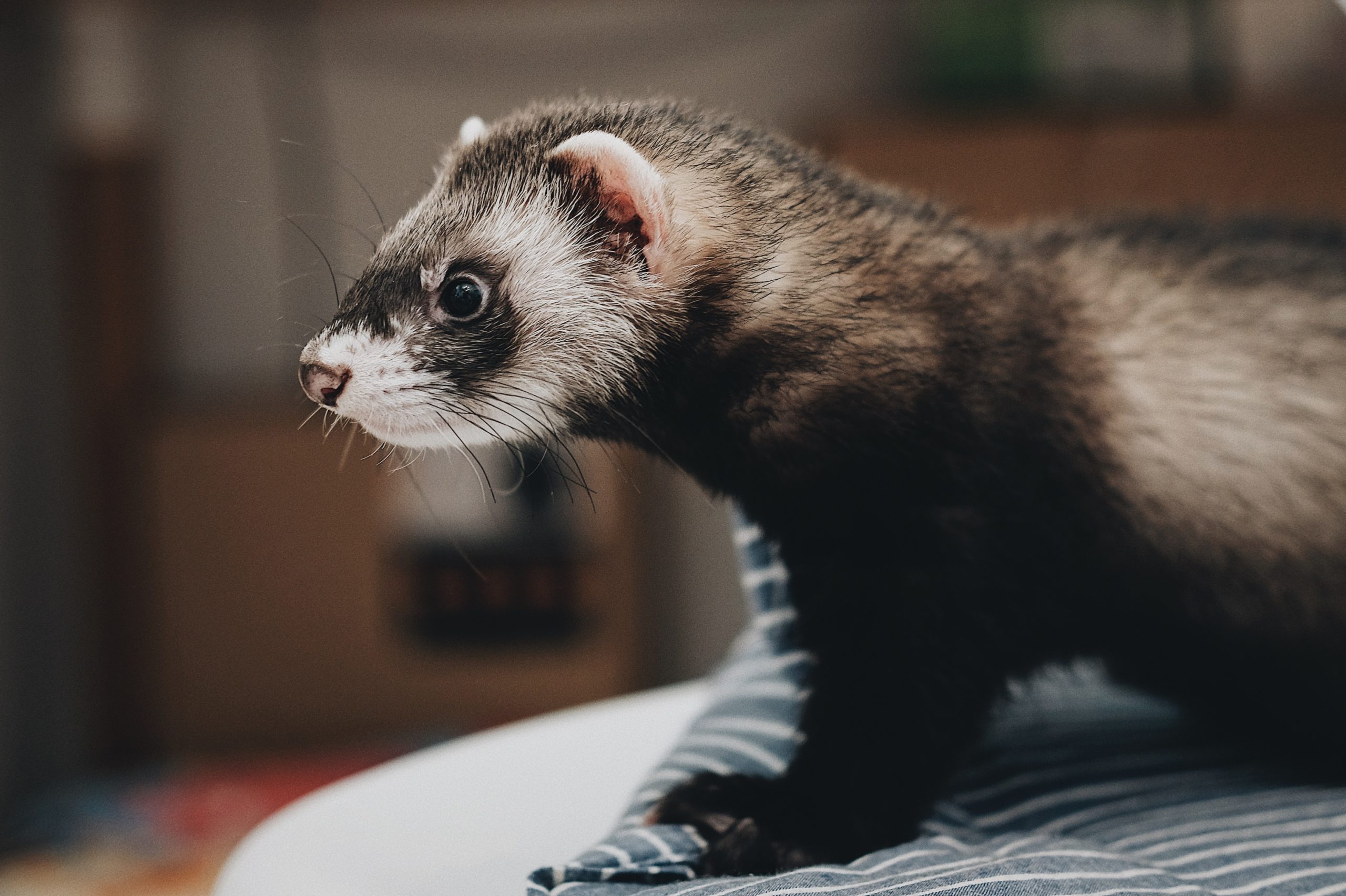Looking after a pet rabbit is a very special responsibility. You need to provide adequate housing, a proper diet, regular grooming and veterinary check-ups, as well as give your rabbit plenty of love and attention.
Following is a look at some of the basic needs your rabbit requires for a happy and healthy life.
Outdoor housing
Traditional rabbit hutch designs are usually too small and fail to meet a rabbit’s needs – cramped cages restrict movement leading to spinal and behavioural problems, and hard or wire floors lead to foot problems and sore hocks.
An ideal hutch:
- has a run with adequate room for the rabbit to stand up fully on its hind limbs and enough space to allow free movement, at the very least it should be able to take 3 successive hops
- provides a sleeping area with a solid floor and sides to offer shelter, as well as somewhere to hide. The floor needs to be lined with soft, absorbent bedding such as straw, grass hay or unscented wood shavings and cleaned daily. A litter tray for toileting can be provided.
- needs to be built from materials that are easy to clean and chew-proof – the hutch itself should be cleaned and scrubbed weekly
- does not have wire flooring
- should be well ventilated – wire mesh sides provide good light and ventilation, as well as mosquito protection
- provides relief from extremes of temperature, wind and rain. The roof needs to be solid and sloped to protect from the elements and be hinged to allow ease of access for cleaning. Raise the hutch off the ground to protect from damp and place in a sheltered part of the garden with adequate sunlight (morning sun), but protected from wind and high temperatures.
- includes water bottles, feeding bowl, hay rack and chew toys for environmental enrichment e.g. tree branches, wooden parrot toys, cardboard boxes and toilet roll tubes.
Confining a rabbit to a hutch for long periods is unsatisfactory, and actually harmful to the rabbit. These days more rabbits are housed, or at least allowed access to, indoors and are included more in family life.
Exercise
All pet rabbits should have daily exercise outside of the hutch – at least 4 hours to free roam. As well as preventing behavioural problems, exercise helps to ensure a healthy gut and prevent obesity and spinal problems.
A rabbit should never be left outside of the cage unsupervised and must be protected from predators and escape. A fenced enclosure with garden shrubbery or logs for shelter can be built around the hutch to provide safe exercise for the rabbit and access to grass, wood and bark. The fence needs to be dug in so the rabbit can’t burrow under and be high enough that it can’t jump out.
Indoor housing
Rabbits adapt easily to living inside and are suited to quiet households. Contrary to popular belief, they are better pets for adults than children – they are after all a prey animal and are naturally timid and wary. They do enjoy affection, however, as it helps them feel secure – make a fuss over them at ground level rather than picking them up and handling them excessively.
The house must be adequately ‘rabbit-proofed’ to protect them from chewing through electrical cords – either prevent access to these by placing behind furniture or cover in a hard plastic sleeving. Remove potentially poisonous plants, protect valuable furniture at ground level or prevent access to certain areas and provide a safe, allowable alternative for their chewing needs, such as chew toys, a piece of untreated, unpainted wood, cardboard boxes and piles of newspapers or old phone books to shred.
Provide a secure sleeping area e.g. a basket, tub or box under a table plus a cardboard box or two around the house that the rabbit can sit inside (cut out an entry plus an exit hole).
Many rabbits can be trained successfully to use a litter tray, especially for urinating, but it is not uncommon for them to leave droppings around from time to time – it is best to simply clean these up and not worry about it. Place a few droppings in the tray to try and encourage the rabbit to use the tray the next time – they are attracted to go in the same place by the smell.
Companionship
Rabbits are sociable animals so housing them with other rabbits is encouraged. Neutered rabbits of opposite or same sexes can be housed together. Any attempted introductions should be monitored closely as rabbits can inflict serious wounds on each other.
It is recommended not to house guinea pigs and rabbits together. Sometimes a rabbit and guinea pig can co-habit if they have been together since weaning, but in most cases the guinea pig is in danger of being kicked and injured by the rabbit. Rabbits may also carry infections that can affect guinea pigs.
Feeding
The most common cause of gastrointestinal disease in rabbits is poor diet. The majority of commercially available rabbit foods are actually inappropriate for pet rabbits – they are too concentrated in carbohydrates and fats and lack appropriate levels of fibre, as well as don’t allow for adequate dental wear and gastrointestinal movement.
Rabbits have a gastrointestinal system designed to digest large amounts of fibrous material. Wild rabbits eat grass & weeds, some flowers and other plant material, occasionally fruit and also chew on bark and branches.
Essentially rabbits should be fed a Hay and Vegetables diet:
- Grass hay (meadow hay) should be available at all times. Grasses of most kinds can be offered (except for grass clippings as they often go mouldy), as well as a variety of garden weeds. Lucerne hay can be given in small amounts but not as the sole source of hay as it is too high in calcium.
- A range of vegetables can be offered, especially leafy green vegetables such as spinach, bok choy, cauliflower leaves, cabbage and Brussels sprout leaves. Celery, pea pods, herbs, broccoli, spring onions, sprouts, lettuce mixes, radish and carrot tops are also suitable. Carrots can be suspended from the cage to keep them occupied and increase time spent eating. Avoid raw beans, corn, rhubarb, and potato peels. Give about 250g/kg bodyweight per day of at least 3 different varieties.
- Fruits can be offered occasionally as a treat e.g. apples, pears, oranges and strawberries. Give no more than 1-2 tablespoons per rabbit per day.
- Feed limited quantities of pellets (no more than 3% of the rabbit’s body weight) and avoid rabbit mixes altogether (selective feeding of items in the mix can lead to dietary deficiencies).
- Twigs and branches from trees are good for rabbits to chew on.
- No salt licks or supplements are required.
Fresh water needs to be provided 24 hours a day in a bowl that can’t be tipped over. Water bottles can be purchased that hang on the side of the cage. Rabbits are very prone to heat stress (temperatures above 28°C) – keep them inside or in the shade and provide frozen water bottles to cuddle up to on hot days (rabbits can’t sweat).
Grooming
Apart from enjoying a good brush, grooming your rabbit regularly is important to its health and well being. Long-haired breeds require daily brushing to remove excess dead hair and prevent hairballs developing. Rabbits cannot vomit and hairballs are prone to cause intestinal obstructions. Daily grooming also allows for early detection of problems, and regular handling helps develop your rabbit’s confidence and friendliness.
Periodic nail trimming is required to prevent harm to you and your family, as well as to other pets. Rabbits have sharp nails and can easily scratch when they kick out their back feet, often quite forcefully. Use nail trimmers designed for pets and clip the sharp tip of the nail so you aren’t in danger of cutting too far down past the ‘quick’, where the blood vessels and nerves are. It is very difficult to judge where the quick is with black nails. Have your vet show you the proper technique.
Vaccination and desexing
All pet rabbits in Australia and New Zealand should be vaccinated against rabbit calicivirus (RCD or RHDV). The disease is almost always fatal and death occurs rapidly, within 12 to 18 hours, from respiratory and heart failure. There is no known treatment and a number of strains have been detected in both countries. Vaccination should be performed by your vet at 10 to 12 weeks of age. Two vaccinations 1 month apart, then 6 monthly boosters are recommended for continuing protection.
Up to 80% of female rabbits will develop uterine cancer if not spayed – spaying of all female rabbits is strongly recommended. As well as preventing cancer, it reduces aggression, facilitates house training of indoor rabbits and allows rabbits to be housed together harmoniously. Desexing of both male and female rabbits is recommended at around 5-6 months of age.
Just as with pet dogs and cats, a 6 monthly check-up for your rabbit is a good idea to ensure your rabbit has as healthy and happy a life as possible. This can be done at the time of the calicivirus vaccination and your vet can check and file your rabbit’s teeth and get the toenails clipped as well.




